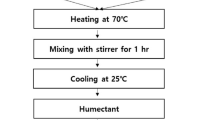Abstract
Various parameters, such as binder properties, printing layer thickness, powder size, and binder saturation level, have effects on the strength and surface finish of the three-dimensional printing (3D printing) process. The objective of this research is to study the effects of two parameters of layer thickness and binder saturation level on mechanical strength, integrity, surface quality, and dimensional accuracy in the 3D printing process. Various specimens include tensile and flexural test specimens and individual network structure specimens are made by the 3D printing process under different layer thicknesses and binder saturation by use of ZCorp.'s ZP102 powder and Zb56 binder. Two printing layer thicknesses, 0.1 and 0.087 mm, are evaluated at 90% and 125% binder saturation levels. Experimental findings show that under the same layer thickness, increment of binder saturation level from 90% to 125% would result in an increase of tensile and flexural strengths of the specimens and decrease of dimensional accuracy and surface uniformity of specimens. On the other hand, under the same binder saturation conditions, increase in layer thickness from 0.087 to 0.1 mm would decrease tensile strength and increase flexural strength. Also, it gives better uniformity on the surface.
Similar content being viewed by others
References
Chua CK, Leong KF, Lim CS (2010) Rapid prototyping: principles and applications, 3rd edn. World Scientific, Singapore
Chua CK (1994) 3-dimensional rapid prototyping technologies and key development areas. Comput Control Eng J 5:200–206
Chua CK, Chou SM, Wong TS (1998) A study of the state-of-the-art rapid prototyping technologies. Int J Adv Manuf Technol 14:146–152
Lee JJ, Sachs EM, Cima MJ (1995) Layer position accuracy in powder-based rapid prototyping. Rapid Prototyping J 1:24–37
Seitz H, RiederW IS, Leukers B, Tille C (2005) Three-dimensional printing of porous ceramic scaffolds for bone tissue engineering. J Biomed Mater Res 74B:782–788
Noguera R, Lejeune M, Chartier T (2005) 3D fine scale ceramic components formed by ink-jet prototyping process. J Eur Ceram Soc 25:2055–2059
Lejeune M, Chartier T, Dossou-Yovo C, Noguera R (2009) Ink-jet printing of ceramic micro-pillar arrays. J Eur Ceram Soc 29:905–911
Cawley JD (1999) Solid freeform fabrication of ceramics. Curr Opin Solid State Mater Sci 4:483–489
Vorndran E, Klammert U, Klarner M, Grover LM, Barralet JE, Gbureck U (2009) 3D printing of β-tricalcium phosphate ceramics. Dent Mater 25:e18–e19
Cappi B, Özkol E, Ebert J, Telle R (2008) Direct inkjet printing of Si3N4: characterization of ink, green bodies and microstructure. J Eur Ceram Soc 28:2625–2628
Lu K, Reynolds WT (2008) 3DP process for fine mesh structure printing. Powder Technol 187:11–18
Lam CXF, Mo XM, Teoh SH, Hutmacher DW (2002) Scaffold development using 3D printing with a starch-based polymer. Mater Sci Eng C 20:49–56
Lanzetta M, Sachs E (2003) Improved surface finish in 3D printing using bimodal powder distribution. Rapid Prototyping J 9:157–166
Liou TM, Shih KC, Chau SW, Chen SC (2002) Three-dimensional simulations of the droplet formation during the inkjet printing process. Int Commun Heat Mass Transf 29:1109–1118
Yeong WY, Chua CK, Leong KF, Chandrasekaran M, Lee MW (2006) Indirect fabrication of collagen scaffold based on inkjet printing technique. Rapid Prototyping J 12:229–237
Stopp S, Wolff T, Irlinger F, Lueth T (2008) A new method for printer calibration and contour accuracy manufacturing with 3D-print technology. Rapid Prototyping J 14:167–172
Dimitrov D, Wijck WV, Schreve K, de Beer N (2006) Investigating the achievable accuracy of three dimensional printing. Rapid Prototyping J 12:42–52
Suwanprateeb J, Suwanpreuk W (2009) Development of translucent and strong three dimensional printing models. Rapid Prototyping J 15:52–58
Czyżewski J, Burzyński P, Gaweł K, Meisner J (2009) Rapid prototyping of electrically conductive components using 3D printing technology. J Mater Process Technol 209:5281–5285
Chiu WK, Yu KM (2008) Direct digital manufacturing of three-dimensional functionally graded material objects. Comput Aided Des 40:1080–1093
Ramakrishnan N, Rajesh PK, Ponnambalam P, Prakasan K (2005) Studies on preparation of ceramic inks and simulation of drop formation and spread in direct ceramic inkjet printing. J Mater Process Technol 169:372–381
Pilipović A, Raos P, Šercer M (2009) Experimental analysis of properties of materials for rapid prototyping. Int J Adv Manuf Technol 40:105–115
Cheah CM, Chua CK, Lee CW, Feng C, Totong K (2005) Rapid prototyping and tooling techniques: a review of applications for rapid investment casting. Int J Adv Manuf Technol 25:308–320
Lu K, Hiser M, Wu W (2009) Effect of particle size on three dimensional printed mesh structures. Powder Technol 192:178–183
Wehl W, Wild J, Lemmermeyer B (2003) A drop-on-demand metal jet printer for wafer bumping. Proceedings of the 14th European Microelectronics and Packaging Conference & Exhibition Friedrichshafen, Germany, pp 23–25
Fremond F, Miyazaki S (1996) Shape memory alloys. Springer, Wien
Z Corporation (2007) 3DP consumables catalog. Available at http://sldtech.com/wp-content/uploads/2008/10/consumables_catalog_.pdf
Author information
Authors and Affiliations
Corresponding author
Rights and permissions
About this article
Cite this article
Vaezi, M., Chua, C.K. Effects of layer thickness and binder saturation level parameters on 3D printing process. Int J Adv Manuf Technol 53, 275–284 (2011). https://doi.org/10.1007/s00170-010-2821-1
Received:
Accepted:
Published:
Issue Date:
DOI: https://doi.org/10.1007/s00170-010-2821-1




